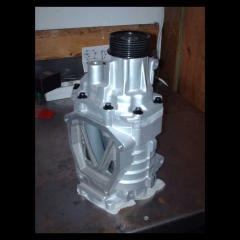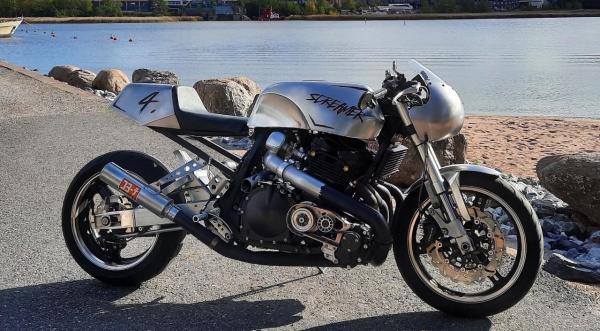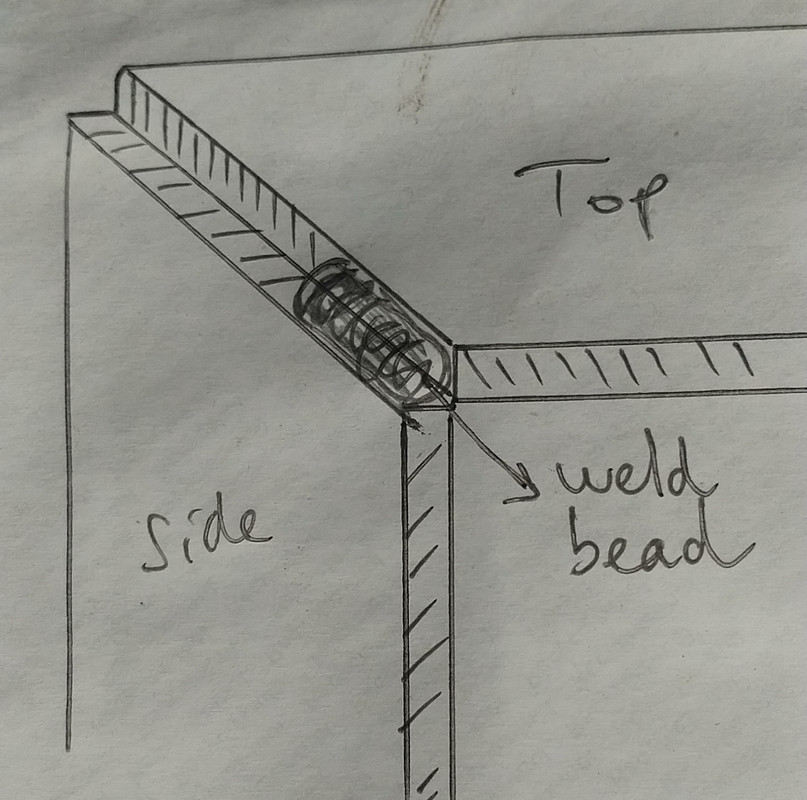-
Posts
489 -
Joined
-
Last visited
Content Type
Profiles
Forums
Events
Posts posted by Blower1
-
-
I had 11:1 CR on my supercharged 1327cc EFE and E85 & flexfuel. The boost was 0.8 bar and water injection in to the supercharger.
Now it´s 10:1CR 1360cc and run mostly with 98 gasoline and same boost as before and water injection.
Both fuels working fine, but engine feels a bit crispier with 98 gasoline than with E85.
Engine runs cooler with E85.
-
7 hours ago, Reinhoud said:
Thanks, could you hear it on idle?
It was audible on idle too.
If you going to lift the cylinder head, check that head gasket not cover the cylinder bores. If it covers, piston can "kiss" the gasket edge in the tdc. That can also be reason for piston slap. I had once head gasket where one cylinder hole was 1mm offset.
-
It was not so loud. It was audible up to highway speeds.
The sound was softer than in connecting rod big end bearing damage.
The sound disappeared for a while when the engine was loaded more heavily ( the pistons expanded more than normal).
-
Piston slap? It not sound so metallic and dissappears when engine have more load.
My first "big bore" cylinder block did that because the piston to cylinder wall clearance was slightly over 0,10 mm.
-
 1
1
-
-
I think a most of the steering damper seals can be found on shops who are selling parts for hydraulics, etc.
-
 1
1
-
-
-
I have rebuild several air cooled crankshafts. Most of them for drag race use. Some with Katana rods and some not.
None of the cranks I´v received for rebuild have had any issues with connecting rods. Usually they have twisted (broken weld) or big end bearing failure.
What I try to say is Katana rods are not mandatory for big power engines. If want beefier and heavier rods the GN250 rods are nearly identical with Katana rods and a lot easier to find. Even those eastern copies of GN250 rods seems to be good material.
My supercharged EFE crankshaft don´t have any fancy parts. It´s rebuilt with good used parts and original helical gears. First crankshaft lasted about 20000 street kilometers before crank pin failures. It had slightly over 220 hp and 200 Nm on rear wheel.
Clutch basket heavy duty back plate and hd springs are needed to handle big power.
-
 2
2
-
-
6 hours ago, johnr said:
all the 1135 ef/efe cranks were welded but also came with 20mm small ends on the rods. 1075 motors were 18mm small ends. sz kats didnt have welded cranks, sd kats did. but before you start going down the welding route, kat 1000 had much stronger rods and if youre planning on long term use it might be worth investing in the stronger rods whilst youre at this stage as a good foundation for future upgrades. and whilst its apart, think about a straight cut primary drive as well, if youre investing time and cash in the motor, give it a good foundation.
If wanting stronger/heavier connecting rods, you can buy new GN250 rods from bay of e or axpress of a. Only difference to 1075 /1135 rod big end bearing is that bearing surface on the rod is wider and bearing have one roller less.
-
Unwelded cranks are prone to twist with higher power than stock.
Get the crankshaft inspected, rebuilt and welded. Then it´s good for bigger horsepower.
-
VHT engine enamel, universal aluminum color. When it´s once heated to +100C, it is petrol resistant.
-
 1
1
-
-
It can be difficult to find stacks with right dimensions for your plenum.
Dimensions depends on many factors, but stacks should not be too close to the plenum end wall, about 15 mm minimum gap.
Stack "bell lip" should be as round as possible. If you google perfect velocity stack you will find many pictures.
There are my solution about velocity stacks in plenum:
-
 1
1
-
-
Are 750F dot head cams usable in bigger engines?
I´m making a 1327cc street engine with dot head and I would like the engine not choke due to too small cams.
I would like to use the Suzuki factory cams and get about 150 hp from the rear wheel.
-
I have planned to make a new bigger and more efficient oil pump to place where the original pump is now.
Just need to find oil pump rotors, which are a few mm bigger in diameter and taller. Making the pump housing is not difficult.
-
 1
1
-
-
One 4" below the cooler on the left corner.
-
Float height set correctly?
-
Bandit 1200 cc cylinder #3 liner don´t have it.
-
6305 NR is standard ball bearing with groove. It is only 17mm wide, but installing 2mm shim(s) between bearing and gear shaft will solve the thickness problem.
Bearing shops are selling shims too.
-
 4
4
-
-
On 10/27/2022 at 6:45 PM, Gixer1460 said:
Yeah I've had it done with overbored GSX and GSXR barrels. From memory cut was about 30 - 40mm wide and 20 - 25mm deep. Whether it achieved anything was undetectable as it was done with other tuning work at same time but as the 1st shop that did it was a fairly successful race bike shop, I wasn't going to argue and demand proof LOL!
It´s probably not working on GSX engines, because there are walls between the cylinders.
Or have you opened the walls and if so, doesn´t it make the engine block weaker?
-
I have Ignitech on my EFE. I like it because it´s cheap, tunable, it can be tuned when engine running and they have good customer service.
If having stock wiring loom it can be ordered to fit as plug and play.
-
 2
2
-
-
10 hours ago, FJD said:
What you guys use for clearence bore/piston ?
Want to get a set of barrels bored out, was thinking 0.06mm ?
Also, does anyone know compression ratio on otherwise stock Bandit with Busa pistons ?
0.06mm clearance is ok. I have 0.05mm piston to bore clearance on my supercharged EFE. It have Busa pistons in resleeved EFE cylinder block. It is using E85 fuel and that´s why slightly tighter fit. Piston ring end gap is also important to set about 0.40mm or more. It´s better suffer a little pressure leak than full disaster.
-
 2
2
-
-
56 minutes ago, Joseph said:
Back to a few basic questions.
Namely :
Inlets :
If using BST36, thats a 42 OD 36 ID spigot on the engine side.
If i do make alloy inlets, i need a flange to weld the stubs in
3mm wall stubs.
Alloy question : what thickness should the flanges be ? Should i anticipate warping of the metal during welding ?
- - - - - - -
Turbo plenum/airbox :
I'm planning on 3mm alloy, looks like thats what was used on my turbo slabby
I'm making plans for laser cut panels to be seam welded on all the edges
Purely technical question :
For this kind of metal, would this the way to position the panels in order to weld for optimal solidity ?
About welding, if you look any factory made pressure vessels, those are all welded together with butt welds.
So hammering the panel edges round about 45 dgr. and then weld in the middle. That way you can use 2mm wall thickness.
There should not be any sharp edges on the plenum
-
3 hours ago, Reinhoud said:
I've got a 493 rod lying around I think, which dimensions you want to know.
When you buy them, the Suzuki dealer is probably the cheapest way to go, be aware that you get the same color codes, different colors is different weights
I have several different rods and I have measured them, so I know the dimensions. Thing what I like to know is why there are different numbers on connecting rods with same dimensions. Are the numbers by the engine, production year, material, strength, or because of some other reasons.
-
 1
1
-
-
The 493 rods are thicker than other GSX 1100 rods with 18mm wristpin. Also Suzuki GN 250cc single cylinder connecting rod have
exactly same dimensions as GSX 1100 rods, nuber is 382. It is also the same thickness as the Katana rods.
-
Over the years, Suzuki has manufactured connecting rods with different number codes (492, 493, 494,etc.)
Many of them have the same main dimensions. Is there a number table of what was used in which engine?





turbo pistons
in Forced Induction
Posted
Old boost calculation formula: (boost (bar) x compression ratio) + compression ratio = 16 or less is safe.
Above 16 needs intercooler and/or lower compression ratio.